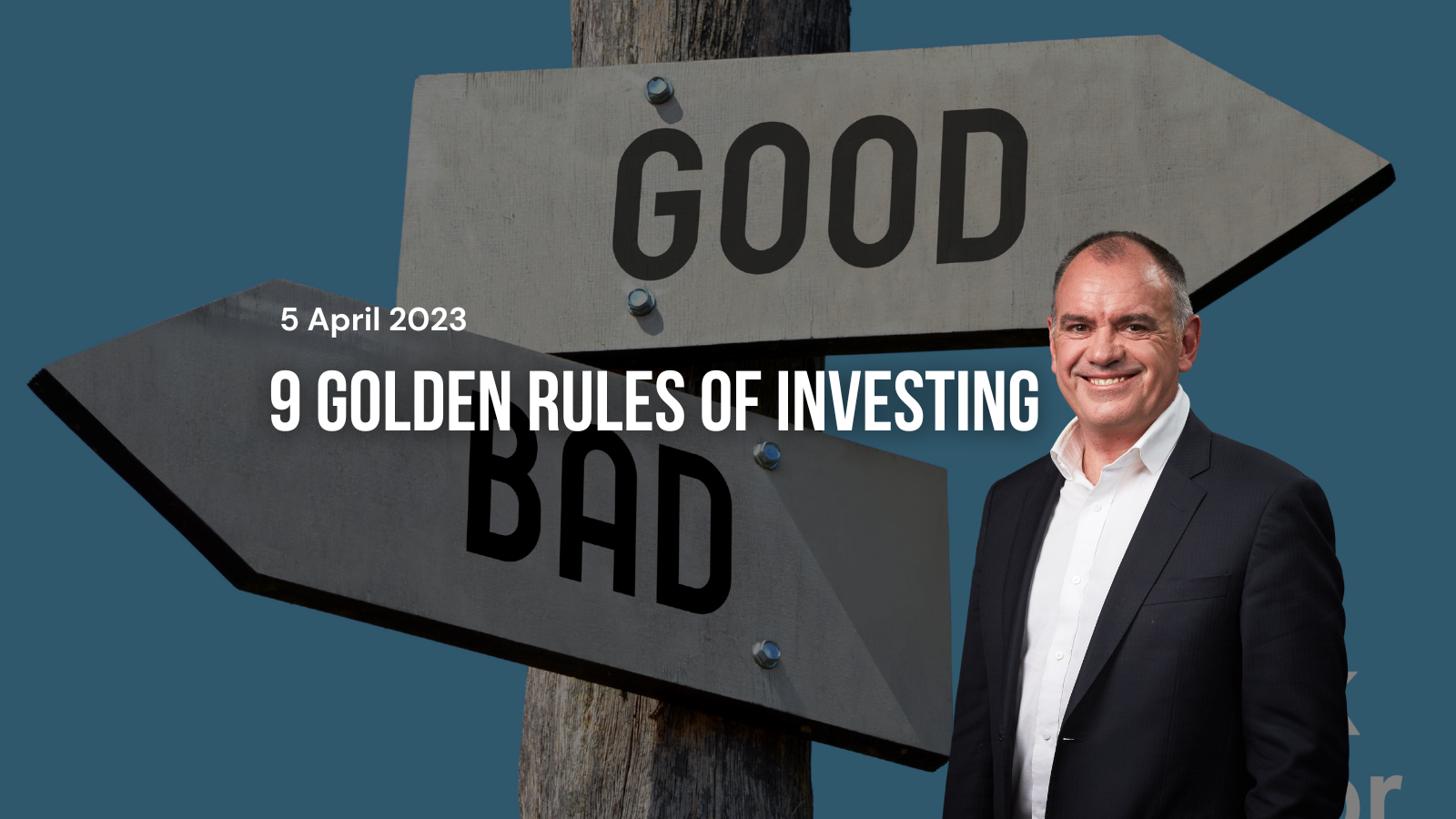

By Tim Lincoln,Co-Founder and Managing Director, Lincoln Indicators
5 April 2023
Stock Doctor’s 9 Golden Rules of investing, developed and refined over thirty years, help Australian investors make well-informed investment decisions. Our proprietary methodology uses quantitative and qualitative assessments of a company’s Financial Health (Golden Rule 1), Past Financial Performance (Golden Rule 2), Earnings Outlook and Active risks of the business (Golden Rule 3). Our process also considers other important factors, including Share Price Sentiment and Short Selling (Golden Rule 4), Share Price Value (Golden Rule 5), Liquidity (Golden Rule 6) and Principal Activities, including Director Holdings (Golden Rule 7). This approach provides an easy-to-follow framework for members to identify growth opportunities or investments with sustainable attractive dividend yields while avoiding insolvency risks in the market.
Stock Doctor’s track record includes the early identification of CSL Limited (CSL), Cochlear (COH), and Pro-Medicus (PME). By implementing our Golden Rules, we have assisted our members in progressing toward their financial objectives and away from struggling companies, such as Virgin Airlines (VAH) and Dick Smith (DSH).
The Good: Pro Medicus Limited (PME)
Pro Medicus, a medical imaging software company, produced an extraordinary set of numbers in its 1H23 result, translating to an annual return on equity of 48% and a net profit margin of 43%. With a market cap of $6.7 billion, the company had grown significantly since being identified as a Star Stock in 2006 at $1.55. But how did we help members identify this business so early in the growth phase?
 In 2006, the firm exhibited attributes of a high-quality business – boasting over 50% return on equity and net profit margins. With robust Financial Health and ample cash reserves, PME acquired the innovative medical imaging software – Visage for US$3.5m in 2009. This acquisition transformed the company into a global powerhouse, enabling radiologists to stream large-sized MRI images and make remote diagnostic decisions. This competitive advantage allowed the business to secure contracts across top-tier US hospitals and sustain its high rates of return and profit margins.
In 2006, the firm exhibited attributes of a high-quality business – boasting over 50% return on equity and net profit margins. With robust Financial Health and ample cash reserves, PME acquired the innovative medical imaging software – Visage for US$3.5m in 2009. This acquisition transformed the company into a global powerhouse, enabling radiologists to stream large-sized MRI images and make remote diagnostic decisions. This competitive advantage allowed the business to secure contracts across top-tier US hospitals and sustain its high rates of return and profit margins.
 Consequently, the stock has consistently traded at a premium valuation with a price-to-earnings ratio (P/E) above 100x. Although lofty valuations have caused apprehension among some institutional funds, leading to a 5% increase in short interest over time, our methodology has kept us confident in the business. This is further supported by founder and CEO Dr. Sam Hupert’s significant skin in the game at 25% of total shares on issue.
Consequently, the stock has consistently traded at a premium valuation with a price-to-earnings ratio (P/E) above 100x. Although lofty valuations have caused apprehension among some institutional funds, leading to a 5% increase in short interest over time, our methodology has kept us confident in the business. This is further supported by founder and CEO Dr. Sam Hupert’s significant skin in the game at 25% of total shares on issue.
The Bad: Star Entertainment Group (SGR)
On the other hand, our investment framework has steered us clear of Star Entertainment Group, an Australian casino and hotel operator. The company’s unsatisfactory Financial Health and significant Active Risks, including COVID-19’s impact on tourism and hospitality, a legal dispute with the New South Wales government, and construction delays for a new Sydney casino, contributed to its struggles. These challenges resulted in a rise in short interest, cost blowouts, falling revenues and cash flows, and a necessity for increased borrowing to maintain liquidity.
 So what made the business financially unhealthy? The increased reliance on debt and deteriorating financial metrics raised red flags. The company’s financial position faltered, with a weakening balance sheet (evidenced by a decline in total liabilities to total tangible assets) and diminishing cash flow from operations. Consequently, the company’s Financial Health score dipped below the acceptable threshold, relegating the company to a speculative grade.
So what made the business financially unhealthy? The increased reliance on debt and deteriorating financial metrics raised red flags. The company’s financial position faltered, with a weakening balance sheet (evidenced by a decline in total liabilities to total tangible assets) and diminishing cash flow from operations. Consequently, the company’s Financial Health score dipped below the acceptable threshold, relegating the company to a speculative grade.
 Ultimately, the share price collapsed following a $1.6bn asset write-down, and the company was forced to undertake a highly dilutive $500m capital raising. This experience underscores the heightened risks of investing in such companies and highlights the importance of caution and thorough analysis as part of the investment process.
Ultimately, the share price collapsed following a $1.6bn asset write-down, and the company was forced to undertake a highly dilutive $500m capital raising. This experience underscores the heightened risks of investing in such companies and highlights the importance of caution and thorough analysis as part of the investment process.
 Stock Doctor’s 9 Golden Rules provide the tools and expertise to distinguish between good and bad investments in the ever-changing economic climate. Our methodology has guided our members’ investment choices, helping them identify success stories like Pro Medicus and avoid struggling companies like Star Entertainment Group.
Stock Doctor’s 9 Golden Rules provide the tools and expertise to distinguish between good and bad investments in the ever-changing economic climate. Our methodology has guided our members’ investment choices, helping them identify success stories like Pro Medicus and avoid struggling companies like Star Entertainment Group.
We invite you to explore the highlights and lowlights of the March reporting season by delving into our article, “The good, the bad, and the ugly of ASX reporting season.” This piece offers a glimpse into the various factors that have shaped company performance and demonstrates how our methodology has helped our members make the right investment decisions.
Let our 9 Golden Rules steer you towards making informed and disciplined investment decisions, separating the good from the bad for a secure financial future. Don’t miss out on the opportunity to thrive in the market with the support of Stock Doctor’s time-tested expertise. Maximize your share market investment potential with a Stock Doctor membership, or give our product a try with a 14-day free trial.
This content is provided by Lincoln Indicators Pty Limited (Lincoln) ABN 23 006 715 573, as Corporate Authorised Representative of Lincoln Financial Group Pty Ltd ABN 70 609 751 966, AFSL 483167. This communication may contain general financial product advice or forward-looking statements regarding our intent, belief or current expectations with respect to the market conditions. Caution is advised to place undue reliance on these forward-looking statements, as our advice has been prepared without taking account of your personal circumstances. Therefore, you should consider its appropriateness, in light of your objectives, financial situation and needs, before acting on it. Please refer to our Financial Services Guide (FSG) for more information at Lincoln Indicators Pty Ltd.





